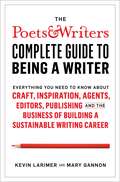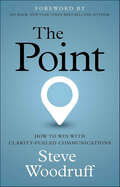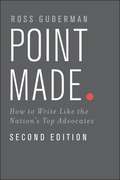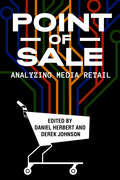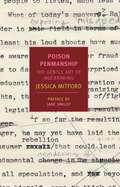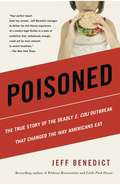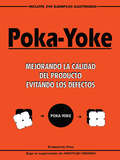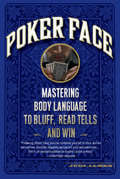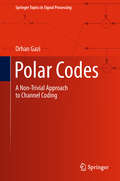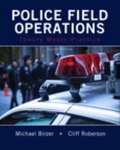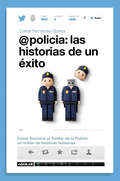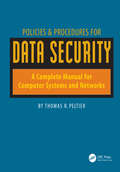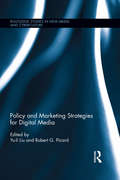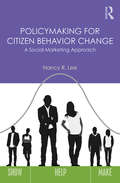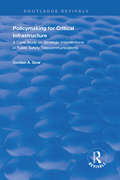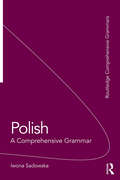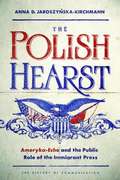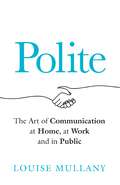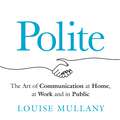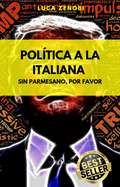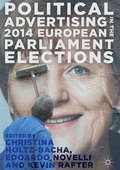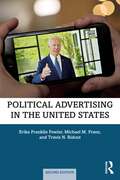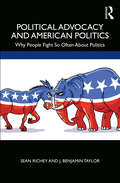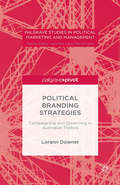- Table View
- List View
The Poets & Writers Complete Guide to Being a Writer: Everything You Need to Know About Craft, Inspiration, Agents, Editors, Publishing, and the Business of Building a Sustainable Writing Career
by Kevin Larimer Mary GannonThe definitive source of information, insight, and advice for creative writers, from the nation&’s largest and most trusted organization for writers, Poets & Writers.For half a century, writers at every stage of their careers have turned to the literary nonprofit organization Poets & Writers and its award-winning magazine for resources to foster their professional development, from writing prompts and tips on technique to informative interviews with published authors, literary agents, and editors. But never before has Poets & Writers marshaled its fifty years&’ worth of knowledge to create an authoritative guide for writers that answers every imaginable question about craft and career—until now. Here is the writing bible for authors of all genres and forms, covering topics such as how to: -Harness your imagination and jump-start your creativity -Develop your work from initial idea to final draft -Find a supportive and inspiring writing community to sustain your career -Find the best MFA program for you -Publish your work in literary magazines and develop a platform -Research writing contests and other opportunities to support your writing life -Decide between traditional publishing and self-publishing -Find the right literary agent -Anticipate what agents look for in queries and proposals -Work successfully with an editor and your publishing team -Market yourself and your work in a digital world -Approach financial planning and taxes as a writer -And much more Written by Kevin Larimer and Mary Gannon, the two most recent editors of Poets & Writers Magazine, this book brings an unrivaled understanding of the areas in which writers seek guidance and support. Filled with insider information like sample query letters, pitch letters, lists of resources, and worksheets for calculating freelance rates, tracking submissions, and managing your taxes, the guide does more than demystify the writing life—it also provides an array of powerful tools for building a sustainable career as a writer. In addition to the wealth of insights into creativity, publishing, and promotion are first-person essays from bestselling authors, including George Saunders, Christina Baker Kline, and Ocean Vuong, as well as reading lists from award-winning writers such as Anthony Doerr, Cheryl Strayed, and Natalie Diaz. Here, at last, is the ultimate comprehensive resource that belongs on every writer&’s desk.
The Point: How to Win with Clarity-Fueled Communications
by Steve WoodruffIs it possible to grab an audience’s attention in this noisy, confusing world? According to Steven Woodruff, the solution can be summed up in a word: clarity.Clarity-fueled communications is the practice of using the fewest words to make the biggest impact. The Point unveils how the overloaded human brain wants information packaged, and how to craft brain-friendly messages that break through the noise.From email to sales pitches, from workshops to resumes, Steven Woodruff’s Clarity Fuel Formula is the universal recipe for communications success. The Point includes four simple actions and eight compelling shortcuts that can be used by anyone to get to the point and get others on the same page.
Point Made: How to Write Like the Nation’s Top Advocates
by Ross Guberman<p>With Point Made, legal writing expert, Ross Guberman, throws a life preserver to attorneys, who are under more pressure than ever to produce compelling prose. What is the strongest opening for a motion or brief? How to draft winning headings? How to tell a persuasive story when the record is dry and dense? The answers are "more science than art," says Guberman, who has analyzed stellar arguments by distinguished attorneys to develop step-by-step instructions for achieving the results you want. <p>The author takes an empirical approach, drawing heavily on the writings of the nation's 50 most influential lawyers, including Barack Obama, John Roberts, Elena Kagan, Ted Olson, and David Boies. Their strategies, demystified and broken down into specific, learnable techniques, become a detailed writing guide full of practical models. In FCC v. Fox, for example, Kathleen Sullivan conjures the potentially dangerous, unintended consequences of finding for the other side (the "Why Should I Care?" technique). Arguing against allowing the FCC to continue fining broadcasters that let the "F-word" slip out, she highlights the chilling effect these fines have on America's radio and TV stations, "discouraging live programming altogether, with attendant loss to valuable and vibrant programming that has long been part of American culture." <p>Each chapter of Point Made focuses on a typically tough challenge, providing a strategic roadmap and practical tips along with annotated examples of how prominent attorneys have resolved that challenge in varied trial and appellate briefs. Short examples and explanations with engaging titles--"Brass Tacks," "Talk to Yourself," "Russian Doll"--deliver weighty materials with a light tone, making the guidelines easy to remember and apply. <p>In addition to all-new examples from the original 50 advocates, this Second Edition introduces eight new superstar lawyers from Solicitor General Don Verrilli, Deanne Maynard, Larry Robbins, and Lisa Blatt to Joshua Rosencranz, Texas Senator Ted Cruz, Judy Clarke, and Sri Srinvasan, now a D.C. Circuit Judge. Ross Guberman also provides provocative new examples from the Affordable Care Act wars, the same-sex marriage fight, and many other recent high-profile cases. Considerably more commentary on the examples is included, along with dozens of style and grammar tips interspersed throughout. Also, for those who seek to improve their advocacy skills and for those who simply need a step-by-step guide to making a good brief better, the book concludes with an all-new set of 50 writing challenges corresponding to the 50 techniques.</p>
Point of Sale: Analyzing Media Retail
by Daniel Herbert Derek Johnson Emily West Greg Steirer Heikki Tyni Olli Sotamaa Elizabeth Affuso Avi Santo Ethan Tussey Meredith A. Bak Courtney Brannon Donoghue Tim J. Anderson Lynn Comella Benjamin Woo Nasreen Rajani Erin Hanna Evan Elkins Marc SteinbergPoint of Sale offers the first significant attempt to center media retail as a vital component in the study of popular culture. It brings together fifteen essays by top media scholars with their fingers on the pulse of both the changes that foreground retail in a digital age and the history that has made retail a fundamental part of the culture industries. The book reveals why retail matters as a site of transactional significance to industries as well as a crucial locus of meaning and interactional participation for consumers. In addition to examining how industries connect books, DVDs, video games, lifestyle products, toys, and more to consumers, it also interrogates the changes in media circulation driven by the collision of digital platforms with existing retail institutions. By grappling with the contexts in which we buy media, Point of Sale uncovers the underlying tensions that define the contemporary culture industries.
Poison Penmanship
by Jessica MitfordAddresses, essays, and lectures on journalism from the gentle muckraker Jessica Mitford.
Poison Penmanship: The Gentle Art of Muckraking
by Jessica Mitford Jane SmileyJessica Mitford was a member of one of England's most legendary families (among her sisters were the novelist Nancy Mitford and the current Duchess of Devonshire) and one of the great muckraking journalists of modern times. Leaving England for America, she pursued a career as an investigative reporter and unrepentant gadfly, publicizing not only the misdeeds of, most famously, the funeral business (The American Way of Death, a bestseller) and the prison business (Kind and Usual Punishment), but also of writing schools and weight-loss programs. Mitford's diligence, unfailing skepticism, and acid pen made her one of the great chroniclers of the mischief people get up to in the pursuit of profit and the name of good. Poison Penmanship collects seventeen of Mitford's finest pieces--about everything from crummy spas to network-TV censorship--and fills them out with the story of how she got the scoop and, no less fascinating, how the story developed after publication. The book is a delight to read: few journalists have ever been as funny as Mitford, or as gifted at getting around in those dark, cobwebbed corners where modern America fashions its shiny promises. It's also an unequaled and necessary manual of the fine art of investigative reporting.
Poisoned
by Jeff Benedict"Your perfect beach book has arrived. With Poisoned, Jeff Benedict manages to deliver the full literary experience of a medico-legal thriller in a work of nonfiction that, fortuitously enough, could not be more relevant to recent headlines."-The New York TimesIn this riveting work of narrative nonfiction, award-winning journalist and best-selling author Jeff Benedict chronicles the events surrounding the biggest food-poisoning epidemic in US history and how this unprecedented crisis sparked public awareness about unsanitary practices in the fast food industry. Poisoned draws on access to confidential documents and exclusive interviews with the real-life characters at the center of the drama.Jeff Benedict is considered one of America's top nonfiction writers. He is the author of nine books including bestsellers Little Pink House, Without Reservation, and Pros and Cons. His reporting has been the basis of feature segments on 60 Minutes, ABC's 20/20, Dateline NBC, HBO's Real Sports with Bryant Gumbel, and the Discovery Channel. He is a contributor to Sports Illustrated and the Deseret News, and his articles have been published in The New York Times, Los Angeles Times, Newsweek, and the Hartford Courant. He has a law degree and is a distinguished professor of English at Southern Virginia University.
Poka-yoke (Spanish): Mejorando la Calidad del Producto Evitando los Defectos
by H. HiranoMuchas cosas pueden ir mal en un entorno de trabajo. Cada dia hay oportunidades para cometer errores que resultaran en defectos. Los defectos son despilfarro y, si no se descubren, frustran las espectativas del cliente sobre la calidad. Detras del poka-yoke esta la conviccion de que no es aceptable producir incluso un pequeno numero de articulos defectuosos. Durante mas de 200 visitas a fbricas Japonesas, Productivity ha presenciado el impacto de simples mecanismos poka-yoke instalados por los propios trabajadores para evitar la ocurrencia de defectos. En este libro, 240 ejemplos poka-yoke despertaran su imaginacion para planificar e implantar sistemas de prevencion de errores.Contenido:Errores de proceso Errores de montaje Errores de ensamble Inclusion de items erroneos Errores de insercion Omisiones en montaje Omisiones en proceso Errores de medicion Errores dimensionales Omision de operaciones Errores de operacion Errores de pegado Errores de inspeccion Errores de cableado Errores de pintura Errores de impresion Desalineamientos Errores en preparacion de mquinas Errores de embalaje Desajuste de plantillas y utiles Errores de lavado Problemas miscelaneos
Poker Face
by Judi JamesThe outcome of card games rests heavily on luck, but poker is predominantly a game of skill - and a major part of that skill is the ability to read an opponent's body language while maintaining control over your own unspoken signals. Explains each stage of lying and bluffing: James - a top body-language guru and image consultant - lays down, step by step, how to disguise your hand and unmask bluffers. By identifying body language giveaways - from posture, facial expressions, to how players hold their cards and chips - and what they reveal, we learn how to hide our emotions and give off misleading cues. Identifies four main poker "personalities": Most players display the traits of one of four different personality groups that influence how they play poker. Their verbal interactions and body language give them away. For each personality, Poker Face reveals the key physical tells that expose bluffing and winning or losing hands.
Polar Codes: A Non-Trivial Approach to Channel Coding (Springer Topics in Signal Processing #15)
by Orhan GaziThis book explains the philosophy of the polar encoding and decoding technique. Polar codes are one of the most recently discovered capacity-achieving channel codes. What sets them apart from other channel codes is the fact that polar codes are designed mathematically and their performance is mathematically proven. The book develops related fundamental concepts from information theory, such as entropy, mutual information, and channel capacity. It then explains the successive cancellation decoding logic and provides the necessary formulas, moving on to demonstrate the successive cancellation decoding operation with a tree structure. It also demonstrates the calculation of split channel capacities when polar codes are employed for binary erasure channels, and explains the mathematical formulation of successive cancellation decoding for polar codes. In closing, the book presents and proves the channel polarization theorem, before mathematically analyzing the performance of polar codes.
Police Field Operations: Theory Meets Practice
by Cliff Roberson Michael L. BirzerPolice Field Operations: Theory Meets Practice, 2/e is a comprehensive, readable text that presents a practical look at police field operations and is designed to be used in one-semester courses on police operations or patrol procedures. Chapters have been designed to be independent units that can be taught individually, but also build upon each other to provide a complete picture of police operations. The text cover all major areas of police operations including patrolling, investigations, crime mapping, community policing, hot pursuit issues, communications, gangs and drugs, and more. Discussions focus on issues and challenges that police officers face on the job and help students bridge the gap between theory and practice.
@policía: las historias de un éxito
by Carlos Fernández GuerraDescubre el perfil de la Policía Nacional en Twitter, la cuenta oficial de seguridad más seguida del mundo. Gracias a su originalidad y sentido del humor, el Twitter de la Policía española ya cuenta con más de 1.000.000 de seguidores. Un millón de historias en una sola, una demostración del nuevo papel que tienen las instituciones y los ciudadanos en el siglo XXI. Con @policia, descubre una Policía comunicadora, revolucionaria y muy eficaz que busca que el ciudadano la conozca y participe de sus éxitos. Entérate de los retos, las campañas, las mejores anécdotas y los logros que se han llevado a cabo gracias a la ciudadanía usando la cuenta de @policia. Conoce a los héroes y villanos de Internet y las conmovedoras historias de cómo la sociedad actúa en situaciones límite ante la llamada de auxilio de @policia. Mira qué hay tras las bambalinas: un equipo de personas con sus fakes, sus historias, sus aspiraciones y muchas ganas de tuitear.Por su lenguaje cercano, orientado a impactar y simpatizar con el ciudadano, así como su visión crítica y humorística de la actualidad, es ya el modelo a seguir para otras muchas instituciones y entidades privadas de todos los ámbitos, que han optado también por este tono informal de comunicación en las redes. Se partícipe de los grandes aciertos y también de los polémicos errores o fakes de esta cuenta. Desde la exitosa petición de donantes de sangre para el accidente de tren de Santiago de 2013 hasta la puesta en marcha de nuevas formas de colaboración ciudadana como la #Tweetredada, con la que se ha conseguido atrapar a cientos de traficantes de droga en nuestro país. Todo esto aderezado con las pequeñas «cagadas», los momentos de tensión y los tuits más torpes de @policia. En este libro no solo encontrarás el relato del éxito de @policia, sino todas las historias humanas que lo han hecho posible. Un millón de historias en una sola, una demostración del nuevo papel que tienen las instituciones y los ciudadanos en el siglo XXI.
Policies & Procedures for Data Security: A Complete Manual for Computer Systems and Networks
by Thomas PeltierHere‘s your how-to manual for developing policies and procedures that maintain the security of information systems and networks in the workplace. It provides numerous checklists and examples of existing programs that you can use as guidelines for creating your own documents.You‘ll learn how to identify your company‘s overall
Policy and Marketing Strategies for Digital Media (Routledge Studies in New Media and Cyberculture)
by Yu-Li Liu Robert G. PicardWith digital media becoming ever more prevalent, it is essential to study policy and marketing strategies tailored to this new development. In this volume, contributors examine government policy for a range of media, including digital television, IPTV, mobile TV, and OTT TV. They also address marketing strategies that can harness the unique nature of digital media’s innovation, production design, and accessibility. They draw on case studies in Asia, North America, and Europe to offer best practices for both policy and marketing strategies.
Policymaking for Citizen Behavior Change: A Social Marketing Approach
by Nancy R. LeeSocial marketing is a discipline unfamiliar to many policymakers, often confused with the more frequently applied and studied fields of social media, behavioral economics, or social change. Social marketing is a growing field and methodology, however, that has been successfully applied to improve public health, prevent injuries, protect the environment, engage communities, and improve financial well-being. Policymaking for Citizen Behavior Change is designed to demonstrate the ways in which social marketing can be an effective and efficient tool to change citizens’ behavior, and how to advocate for and support its appropriate application. Providing a 10-Step Planning Model and examining a variety of social marketing cases and tools, including more than 40 success stories, Policymaking for Citizen Behavior Change is core reading for current policymakers, as well as all those studying and practicing social marketing, particularly in the public sector. It’s also worthwhile supplementary reading for those studying public policy, public administration, environmental justice, public health, and other programs on how to effect social change.
Policymaking for Critical Infrastructure: A Case Study on Strategic Interventions in Public Safety Telecommunications (Routledge Revivals)
by Gordon A. GowOriginally published in 2005. By weaving together three distinct fields - public policy, technology studies and management of critical infrastructure - this volume shows how public policy can help to improve the management of large technical systems. A much-needed analytical framework, based on approaches drawn from established work in science and technology studies, is applied to a case study of the development of a new public safety service for mobile telephones. This example of emerging growth and change in critical infrastructure allows Gordon Gow to identify current problem areas and to refine a more general set of strategies aimed at improving public policy processes in the management of technology. The work also discusses a range of contemporary issues in telecom policy and regulation, such as public consultation, technical standards, network unbundling and interconnection. This insightful work provides observations and recommendations for policy makers, regulators, industry and consumer groups alike, furthering the improved coordination of efforts across these domains of interest.
Polish: A Comprehensive Grammar (Routledge Comprehensive Grammars)
by Iwona SadowskaPolish: A Comprehensive Grammar is a complete reference guide to the grammar system for intermediate to advanced learners of Polish. It presents an accessible and systematic description of the language, focusing on real patterns of use in contemporary Polish. The Grammar is a comprehensive work and an invaluable resource for students and anyone interested in linguistics and the way modern Polish works. Features include: coverage of all parts of speech full cross referencing well selected and illuminating examples. The book is organised in such a way to promote a thorough understanding of Polish at all levels of structure; the sound system, formation of word and phrases and sentence construction. It offers a stimulating analysis of the complexities of the language, providing clear explanations and examples of each point. Polish: A Comprehensive Grammar is the essential reference work on Polish grammar for all learners and users of the language.
The Polish Hearst: Ameryka-Echo and the Public Role of the Immigrant Press
by Anna D Jaroszynska-KirchmannArriving in the U.S. in 1883, typesetter Antoni A. Paryski founded a publishing empire that earned him the nickname "The Polish Hearst." His weekly Ameryka-Echo became a defining publication in the international Polish diaspora and its much-read letters section a public sphere for immigrants to come together as a community to discuss issues in their own language. Anna D. Jaroszynska-Kirchmann mines seven decades' worth of thoughts expressed by Ameryka-Echo readers to chronicle the ethnic press's long-overlooked role in the immigrant experience. Open and unedited debate harkened back to homegrown journalistic traditions, and The Polish Hearst opens the door on the nuances of an editorial philosophy that cultivated readers as important content creators. As Jaroszynska-Kirchmann shows, ethnic publications in the process forged immigrant social networks and pushed notions of education and self-improvement throughout Polonia.
Polite: The Art of Communication at Home, at Work and in Public
by Louise MullanyThe first ever mass-market book on politeness and the important role it plays in our work, relationships and lives, from professor and pioneer of Politeness Theory, Louise MullanyAre women really more polite than men?What is the best way to apologise?And when is it OK to swear?Politeness rules our day-to-day lives, whether it's speaking to colleagues about issues at work, dealing with difficult family members or wondering if you should eat the last piece of pie. For years, Professor Louise Mullany has been examining the prevalence and power of politeness in our everyday speech and actions, and discovering what this says about us.In Polite, Louise shows how the unseen science of politeness governs everything we do, from what we say to how we act, and reveals how a better understanding of the rules and norms of politeness can help us in all aspects of our work, leisure and home lives.And, in doing so, she answers the age-old question... are politeness standards really declining?
Polite: The Art of Communication at Home, at Work and in Public
by Louise MullanyThe first ever mass-market book on politeness and the important role it plays in our work, relationships and lives, from professor and pioneer of Politeness Theory, Louise Mullany'Fascinating and insightful. I'm grateful to have read it, and pleased to have learnt so much in the process. I would - politely - encourage you to do the same.' Jon McGregorAre women really more polite than men?What is the best way to apologise?And when is it OK to swear?Politeness rules our day-to-day lives, whether it's speaking to colleagues about issues at work, dealing with difficult family members or wondering if you should eat the last piece of pie. For years, Professor Louise Mullany has been examining the prevalence and power of politeness in our everyday speech and actions, and discovering what this says about us.In Polite, Louise shows how the unseen science of politeness governs everything we do, from what we say to how we act, and reveals how a better understanding of the rules and norms of politeness can help us in all aspects of our work, leisure and home lives.And, in doing so, she answers the age-old question... are politeness standards really declining?'A must-read for anyone interested in becoming a more effective communicator.' Michael Haugh, The University of Queensland
Política A La Italiana: sin parmesano, por favor
by Luca ZenobiLa astucia y las competencias comunicativas seguramente ayudan a encontrar el camino más corto para llegar al corazón del elector. La verdad es que este tesoro a menudo no se comprende, intercambiando la política por la comunicación política. Así, nos encontramos personajes faltos de contenidos serios, incluso a menudo desinteresados en los contenidos serios, pero muy hábiles en la persuasión de masas. No importa lo que sea verdad, o lo que no sea verdad, lo que cuenta es lo que el personaje consiga emocionar al público. La buena noticia es que el pueblo italiano es creativo y después de Berlusconi, Grillo y Renzi, ya inventará algo nuevo sin lugar a dudas.
Political Advertising in the 2014 European Parliament Elections
by Christina Holtz-Bacha Edoardo Novelli Kevin RafterThis timely publication offers a fresh scholarly assessment of political advertising across the EU, as well as an insight into differing political and regulatory systems related to political advertising in the individual member states. With a detailed focus on the images and communication styles that characterised the 2014 European Parliament election campaign, this edited collection evaluates political advertising across the EU using empirical data to compare and contrast styles and approaches in different members. This work allows the authors to offer an important evaluation of the similarities and differences in the posters and broadcasts used to win public support in the 2014 campaign at the time of the great European recession and financial crisis, specifically looking at the place of posters and video commercials. This book will appeal to researchers and students of political communication, political science, history, European studies as well as candidates and campaign workers who want a more comprehensive understanding of the representation of Europe in political adverts at the 2014 elections.
Political Advertising in the United States
by Michael M. Franz Travis N. Ridout Erika Franklin FowlerPolitical Advertising in the United States examines the volume, distribution, content, and effects of political advertising in congressional and presidential elections. The book considers the role of television ads using extensive data on ad airings on local broadcast stations. It also analyzes newly available data on paid digital ads, including ads on Facebook, Instagram, Google, and YouTube. The book covers the role of outside groups in airing ads, including the rise of dark money groups and gaps in existing federal campaign finance laws around transparency of outside group spending. The authors consider how ad sponsors design and target ads. They also review the positive and negative implications of an electoral system where billions are spent on paid advertising. With detailed analysis of presidential and congressional campaign ads and discussion questions in each chapter, this accessibly written book is a must-read for students, scholars, and practitioners who want to understand the ins and outs of political advertising. New to the Second Edition • Covers the spending, content, and tone of political advertising in the 2016 and 2020 presidential elections and the 2018 midterms, looking ahead to 2022 and 2024. • Addresses the interference of foreign actors in elections and their connection to political advertising. • Expands the discussion of digital political advertising and incorporates this topic into every chapter. • Adds a new chapter specifically addressing digital ad content and spending. • Includes data from the Facebook, Google, and Snapchat ad libraries and explores the role of these companies in regulating the sale of political advertising. • Incorporates new data on the effects of race and gender in advertising, including what is known about the way in which advertising may activate prejudicial attitudes.
Political Advocacy and American Politics: Why People Fight So Often About Politics
by Sean Richey J. Benjamin TaylorPolitical Advocacy and American Politics provides a detailed explanation as to why citizens engage in interpersonal advocacy in the United States. Sean Richey and J. Benjamin Taylor eloquently show how the campaigns, social media, and personality and partisanship affect one's propensity for candidates, which often leads to arguments about politics. Using original qualitative, survey, and experimental studies, Richey and Taylor demonstrate the causes of political advocacy over time in the political environment and at the individual level. While some worry about the incivility in American politics, Richey and Taylor argue political talk, where conflict is common, is caused by high-activity democratic processes and normatively beneficial individual attributes. Furthermore, Richey and Taylor argue that advocacy—when conceptualized as a democratic "release valve"—is exactly the kind of conflict we might expect in a vibrant democracy. Political Advocacy and American Politics: Why People Fight So Often About Politics is ideal for university students and researchers, yet it is also accessible to any reader looking to learn more about the role campaigns and personal attributes play in the decision to advocate.
Political Branding Strategies: Campaigning and Governing in Australian Politics (Palgrave Studies in Political Marketing and Management)
by Lorann DownerPolitical Branding Strategies tells the story of branding by the Australian Labor Party across seven years and three brands – Kevin07, The Real Julia and that of the party. Employing a new framework to understand and evaluate branding, the book offers lessons for practitioners, researchers and citizens in democracies everywhere.
